
views
Being Prepared

Be on time. Give yourself plenty of time to commute to the office and get to meetings or other appointments. Be early to give yourself time to prepare or just catch up on emails or other tasks. Try tracking the time it takes you to get to work every day to see what the true average is, and adjust your timing accordingly. Add a buffer time of 15 or 20 minutes to any given time, and even test out how long it takes to get somewhere in advance of going there for the first time.

Be clear mentally. Get plenty of rest so that your mind stays sharp and thinking efficiently. Have a cup of coffee or tea in the morning if you like, or whenever you need a boost. Take breaks and pause to reorganize your desk periodically. Get up from your desk or take a break from what you’re doing for 17 minutes after every 52 minutes, as studies show this makes for the best productivity. Do a few simple exercises, talk to coworkers, or just take a stroll around the office during this time.
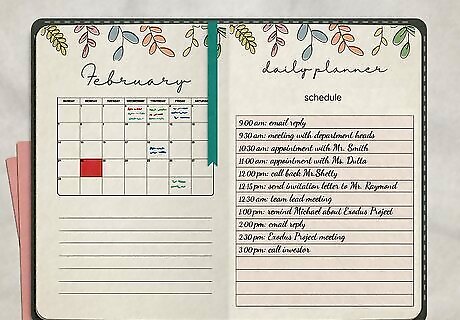
Know the schedule. Familiarize yourself with the schedule for your boss, yourself, or any other employees you need to keep track of at the beginning of every day. Glance over the schedule periodically so you can save time when making appointments and avoid double-booking or other errors. Keep schedules and calendars open and available to pull up on your computer or phone at a moment’s notice so you can consult them and add appointments in right away.

Come to meetings with all materials. Show up to any appointment ready with materials and clear notes from previous meetings, and a device or notebook to take down minutes and other notes from the current meeting. Ask your boss about anything regarding your role in the meeting, including any special materials like forms or handouts that you can have ready to save time on preparing or printing later. Try sending out an agenda for the upcoming meeting, minutes from the last meeting, or any other relevant materials to all the attendees the morning of or night before.
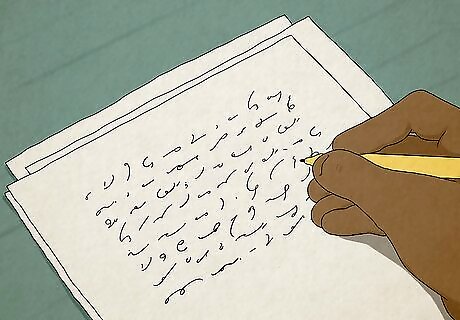
Consider learning shorthand. Learn about different types of shorthand and ways to speed up your writing if you take a lot of notes by hand. Take a shorthand course to learn the characters and improve your speed. If you don’t often take notes by hand or you don’t want to learn shorthand, do a typing test. Set a timer for a minute and try typing out a typical email on your phone, tablet, laptop keyboard, and detached keyboard. Then count the number of words you typed on each device. Stick to the device with the highest word count when you need to take quick notes.
Getting Organized
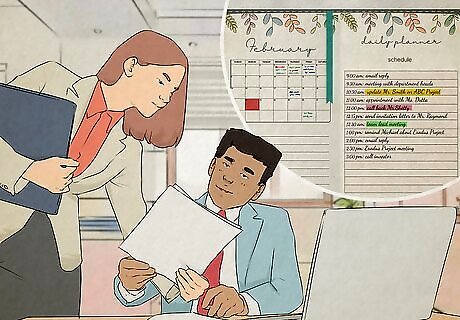
Commit to lists and planners. Keep a planner, calendar, and to-do list and update them consistently. Keep them in easily seen and reached places, or have multiple that can be synced together. If you work well with pen and paper, keep a small planner or calendar that can fit in your pocket or purse so you always have it with you. Keep a pen attached if possible so you never have to fish around for one. Have a designated note pad for to-do lists at your desk, and cross things off as you go. If you work better with digital organization, use your phone’s calendar and reminder system to make appointments and receive notifications about them. Try apps like Wunderlist or Todoist to manage your tasks.
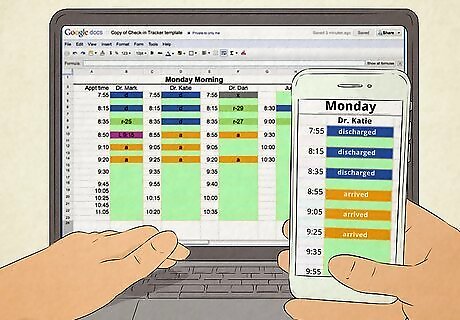
Sync your information. Make sure you always have notes and other materials with you by syncing calendars, lists, and files across all your devices, which nearly every modern app has the capability to do. Share tasks, documents, and notes with other secretaries, your boss, or other employees with project management software like Basecamp or Trello. Share documents and spreadsheets with Google Docs and use programs like Dropbox or Hightail to send files.
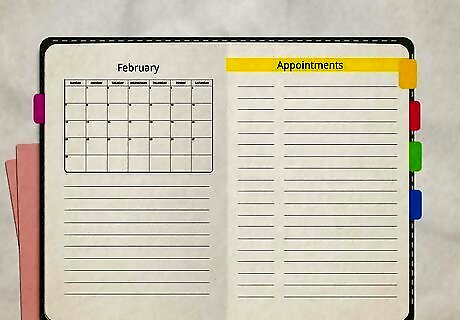
Color-code everything. Set up a color-coding system to help categorize all of your materials at a glance. Assign a color to each project, day, employee, or any way you want to delineate your work. Use highlighters and colored tabs or labels to mark up files, trays, and notebooks to easily locate the right information. Many web and mobile apps for email, calendars, and lists also allow you to assign a color to each item.
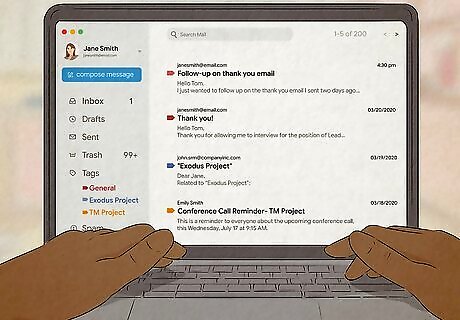
Clean up your inbox. Keep your email inbox clean and important information easy to access by filing an email into a folder right away, flagging or marking it as unread if you need to come back to it, or archiving or deleting it if you’re sure you no longer need it. Try making folders for each year, quarter, or month, or label them by project, employee, or type. Try to respond to, delete, or log the email's information elsewhere right away. Set schedules for yourself, like having all emails filed in appropriate folders by the end of the day, and cleaning out and dealing with everything left in your inbox by the end of the week.
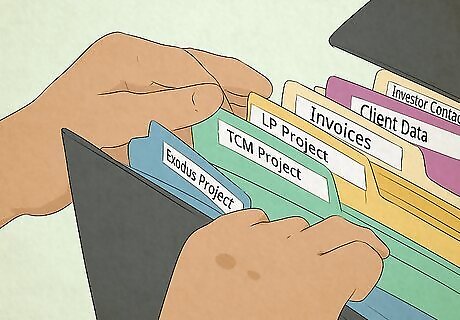
Be consistent. Keep materials of the same type in a particular place, and designate notebooks and folders to specific projects. Have a specific notepad for phone memos, for example, that always stays by the phone so you never end up taking down someone’s name and number on a napkin. Keep meeting notes in a separate place from other notes so information doesn’t get mixed up and hard to find later.
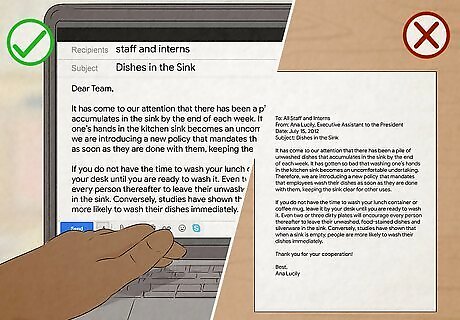
Save paper and time. Avoid printing to save paper and opt for online forms or other documents so you can save time and resources. Fill out forms electronically if possible. Scan and save copies of paper files so they’re always available and don’t get damaged or lost. Circulate digital files, reminders, memos, and agendas instead of paper versions whenever possible.
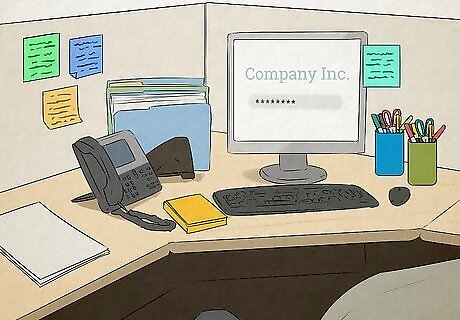
Stock up on supplies. Never run out of important materials you use to be organized, like notepads, pens, envelopes, and stamps by buying or letting an office manager/purchaser know when you are on your last box or container of something rather than once they are all gone. Order supplies in bulk from a company like Quill to save money and avoid running out so quickly. Keep supplies organized at your desk or workspace. Use containers, trays, file folders, and other containers that are all labeled or colored for easy sorting.
Communicating Efficiently
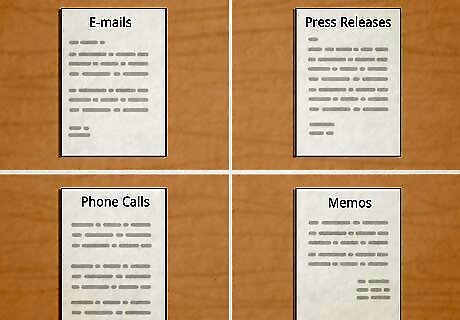
Stick to scripts. Save time and energy by coming up with simple language to reuse for correspondence that you frequently repeat. Have several scripts available for different situations like emails, press releases, or phone calls, which you can copy, paste, and easily edit to suit the specific scenario.

Be a meticulous note-taker. Jot down notes on your phone, laptop, or notepad for every meeting, phone message, or other important conversation. Place or move these notes into specifically labeled physical or electronic folders so that you can refer to them later and have records of verbal communication that you may forget in the course of a busy day.

Be efficient and friendly on the phone. Practice your greeting and other important or common information you need to say over the phone. Have the list of phone extensions for your office right in front of you and work on committing them to memory so you can transfer calls quickly. Get to know the special features of your office phone, like sending someone straight to an employee’s voicemail or adding people into a conference call, so you can save time and avoid technical difficulties.

Check your grammar. Make sure that every form of written communication you send out is spell-checked and free of grammar and punctuation errors. Spend the extra few minutes to read over emails, agendas, and other correspondence to check that everything is correct and save the later time and embarrassment of having to issue corrections or answer emails from confused recipients. Turn on spell-check in the applications you use for documents, spreadsheets, and emails. Turn on this feature in your browser as well to catch any errors while typing on a webpage, especially when posting to the company’s website, social media accounts, or other official platforms.

Keep emails and voicemails short and sweet. State your purpose for calling or emailing in as few words as possible. Ask direct questions and repeat your name, company, phone number, and email when needed. Provide a time by which you expect or hope to hear back from them so you can deal with communication efficiently.

Confirm appointments and times. Make sure you’re on the same page and provide reminders by calling or emailing the day before or day-of to confirm appointments and other important engagements. Get back in touch with people you haven’t heard from by sending polite and succinct emails or phone messages to remind them you’re waiting on a response.


















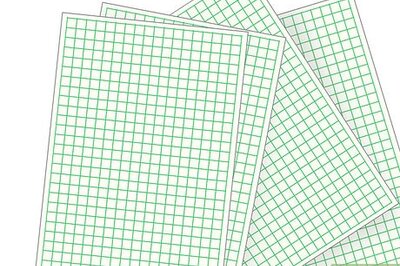
Comments
0 comment